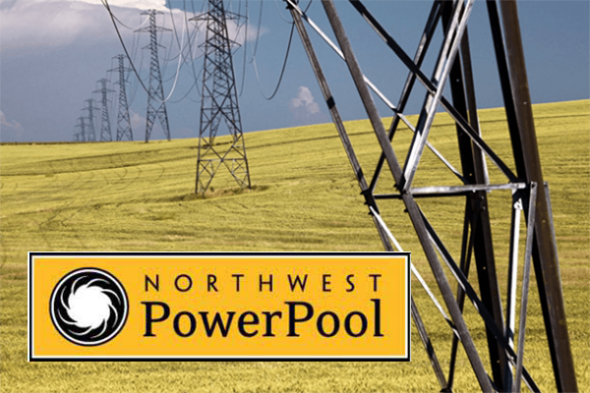NW Power Pool: Bringing the History of Regional Cooperation to the Future
Posted on March 25, 2021 by Mike Goetz
Tags, Energy

Imagine, if you will, your utility functioning in complete isolation to ensure the lights and appliances in your home (and the homes of millions around you) will turn on every single time. This concept of reliability is at the core of the utility function, and historically, utilities functioned as islands to make sure their energy supply constantly matched the demand in their own individual service territories. If this sounds difficult, it is. With the advent of modern interstate transmission lines and sophisticated trading markets, utilities in our region can now purchase electricity from others when their supply is low, and sell when it is high. This sort of cooperation can lead to utilities pushing off the need to build a new power plant or other large capital expense, and the efficiencies gained can lead to tremendous savings for customers.
In the Northwest, our utilities continued as islands long after much of the country opted to build programs that pooled the resources of many regional utilities. While our region is still a work in progress, we would not be anywhere near where we are today were it not for the Northwest Power Pool (NWPP). The NWPP is a consortium of power producing entities and government agencies from throughout the West, with the majority operating here in the northwestern U.S. and Canada. Together, they pool their intricate webs of generation and transmission for the purpose of ensuring that the region’s power supply is as reliable and efficient as possible. The members of the NWPP have cooperated since its inception in 1941 on matters such as, for instance, managing the Columbia River basin dams for the benefit of the system as a whole.
The expansion and management of the Columbia River hydro system proved to be an invaluable resource for the region and the country during the second World War, as a lot of industrial manufacturing moved to the Northwest to capture the cheap and reliable power the dams provided. More entities continued to join the NWPP over the following years, but it was always on a voluntary basis, until 1961. That year, the NWPP changed in character because the Columbia River Treaty with Canada was signed, which paved the way for contractual obligations coordinating the use of water throughout the Columbia River Basin. The agreements resulting from this treaty ensured that the water—and therefore, the energy—that flowed throughout the broad basin would be optimized for all entities, so it would always be available to all.
Today, through a complex series of agreements, member utilities share electricity back and forth over interconnected transmission lines to prevent and curtail brownouts and blackouts. The NWPP continues to oversee the optimization of the broader hydro system, but also governs the sharing of contingency reserves between member utilities. And now, the NWPP is tasked with overseeing another monumental project: the rollout of a regional Resource Adequacy Program.
With the closure of many coal-fired and other fossil fuel based generating resources throughout the west set to occur over the next couple of decades, utilities in the region were facing potential capacity shortfalls. That is, they were concerned about their ability to have adequate energy to serve the needs of their customers during times of peak need. In order to get ahead of this problem, the NWPP convened a working group starting in 2019 to explore the possibilities of a regional resource adequacy program. As detailed on the CUB blog, we have had a seat on an advisory committee to help form the scope and parameters of the program since Spring of 2020.
At a high level, the resource adequacy program will enable participating utilities to demonstrate that they all individually have enough capacity to serve their peak needs, before entering into an operational phase of the program in which they can collectively pool their resources. This has the potential to unlock significant benefits due to the geographic and resource diversity covered by the broad NWPP footprint. On a hot day in Idaho when everyone is running their air conditioning, for example, it may be cooler in western Oregon. Therefore, utilities operating in Oregon may be able to send electricity that is not needed across the system to meet the higher energy demand of Idaho residents. This type of scenario would be played out again and again, back and forth across the program’s footprint.
CUB is proud to work alongside the NWPP in rolling out this historic effort. The NWPP has been a fixture of our region for quite some time and, with innovative and groundbreaking new programs, it seems that they will be far into the future as well.
To keep up with CUB, like us on Facebook and follow us on Twitter!





03/25/21 | 0 Comments | NW Power Pool: Bringing the History of Regional Cooperation to the Future